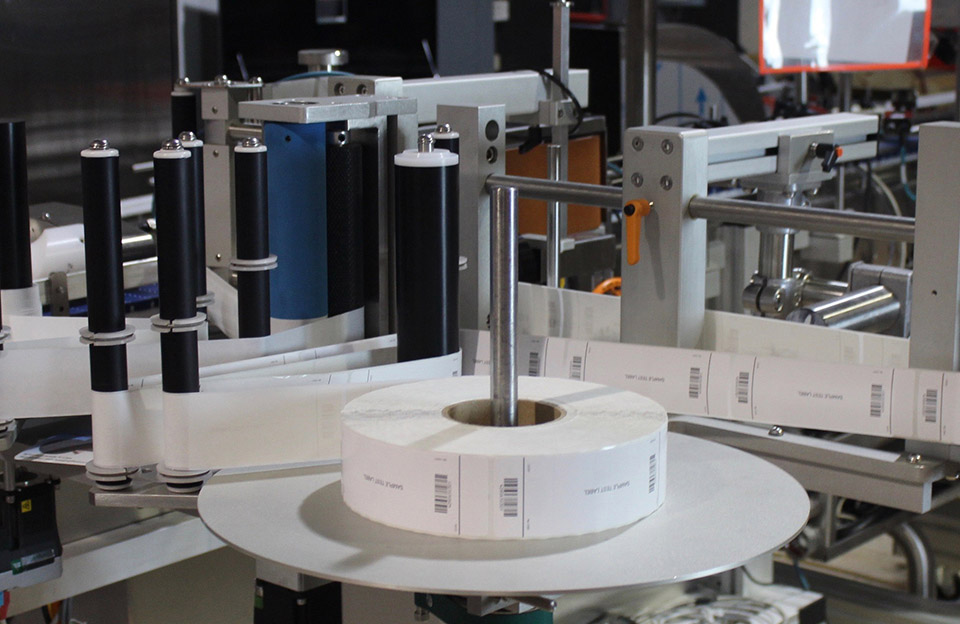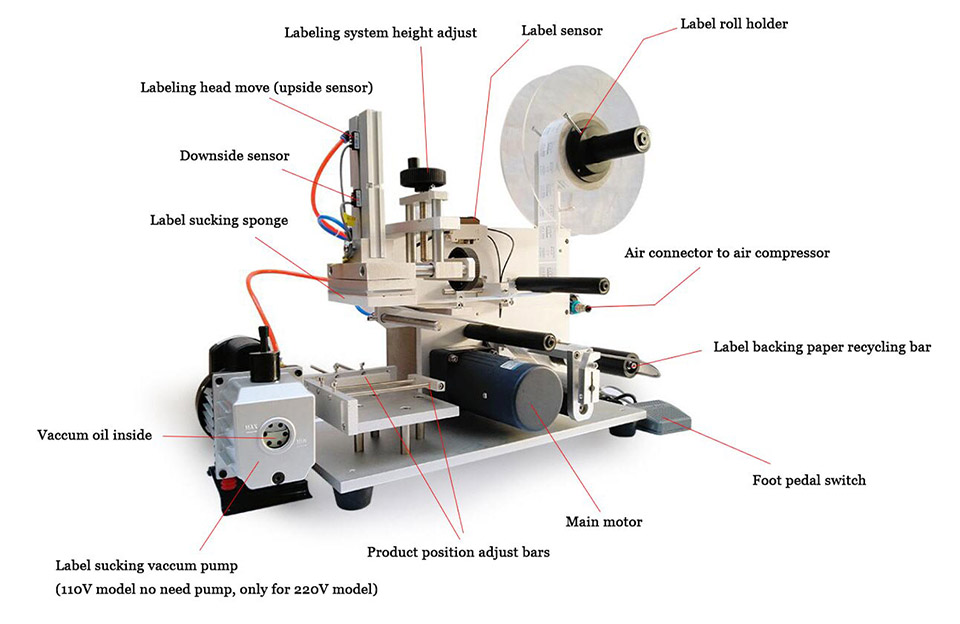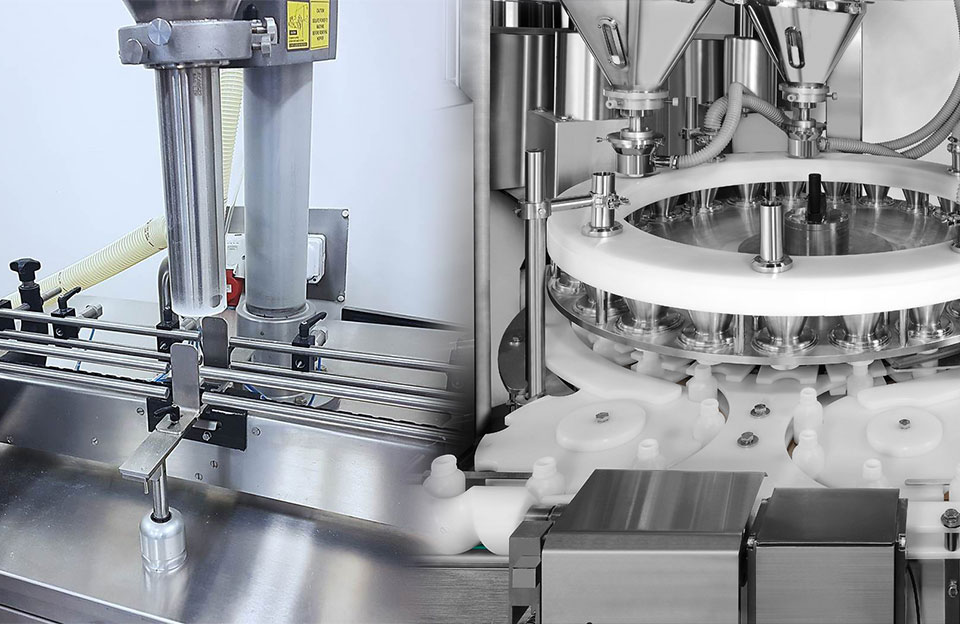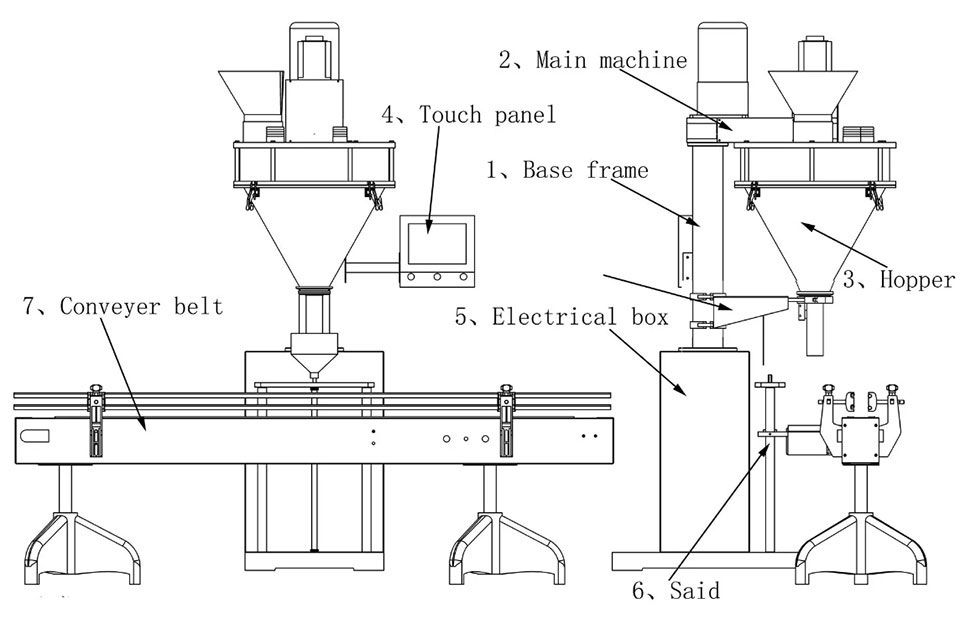Label rolls play a crucial role in the efficient and accurate operation of labeling machines. The label roll is the spool or reel containing adhesive labels applied to various industries’ products, packages, or containers.
Properly wound and aligned label rolls ensure the labels feed smoothly and consistently through the labeling machine. Precise alignment ensures accurate label placement on the products or containers. Any misalignment or wrinkling of labels could lead to errors in the labeling process, affecting product appearance and potentially causing problems in the supply chain.

How to Load the Label Roll on Labeling Machine?
Loading a label roll onto a labeling machine may vary depending on the specific machine’s design and manufacturer. However, the general steps for loading a label roll on a typical labeling machine are as follows:
Prepare the Label Roll:
- Ensure the label roll is the correct size and type for the labeling machine.
- Check that the labels are wound tightly and evenly on the roll to prevent any feeding issues during the labeling process.
Open the Labeling Machine:
- Access the labeling machine’s label dispensing area by opening the appropriate cover or panel. Some machines may have a hinged door or sliding mechanism for easy access.
Insert the Label Roll:
- Position the label roll in the designated holder or spindle provided by the labeling machine. Make sure the roll is aligned with the machine’s feeding mechanism.
Thread the Label Webbing:
- Locate the starting edge of the label webbing (the backing material that holds the labels together on the roll).
- Feed the starting edge of the label webbing through the appropriate guides or rollers in the machine.
- Ensure the label webbing is correctly threaded to follow the path specified by the machine’s manual. This usually involves passing the webbing around various rollers and sensors to control label feeding.
Adjust the Tension:
- Some labeling machines have tension adjustments to control the tightness of the label webbing. Ensure the tension is set correctly to avoid label misalignment or wrinkling issues.
Close the Machine:
- Once the label roll is correctly loaded and the label webbing is threaded through the machine, close and secure any opened panels or covers to access the label dispensing area.
Initiate Label Feed:
- Power on the labeling machine and follow the instructions in the machine’s manual to initiate label feed and calibration. This process will ensure that the machine can apply labels accurately to your products or containers.
Test Run:
- Before using the labeling machine for full production, perform a test run with a small batch of products to verify that the labels are being applied correctly and that the machine is functioning as expected.

Label Roll on Labeling Machine
Common Problems and Solutions of the Label Supply System
The label supply system is a critical component of a labeling machine, and problems with it can lead to labeling issues, downtime, and reduced productivity. Here are some common problems related to the label supply system and their possible solutions:
Label Jamming or Misfeeding:
- Problem: Labels get stuck or jammed in the feeding mechanism, leading to interruptions in the labeling process or misalignment of product labels.
- Solution:
- Check the label roll for any misalignment or irregular winding. Rewind the labels evenly if needed.
- Ensure the label roll is properly seated in the holder or spindle to prevent misfeeding.
- Check and adjust the tension in the label webbing to prevent it from being too loose or tight, as both can cause feeding issues.
- Clean the label path, rollers, and sensors to remove any debris that might obstruct label movement.
- Verify that the label sensors are functioning correctly, as faulty sensors can lead to misfeeding.
Label Webbing Breakage:
- Problem: The label webbing (backing material) breaks during the labeling process, halting production.
- Solution:
- Inspect the label webbing for any defects or damage. Replace the label roll if the webbing is damaged.
- Adjust the tension in the label webbing to ensure it is not too tight, as excessive tension can cause breakage.
- Make sure the label webbing is properly threaded through the machine without any sharp bends or obstructions that could cause stress on the material.
Inconsistent Label Application:
- Problem: Labels are not consistently applied to the products, leading to misalignment or partial labeling.
- Solution:
- Check the alignment of the label roll in the holder to ensure smooth and even feeding of labels.
- Verify that the label sensors are properly calibrated to detect the products accurately and trigger label application at the correct position.
- Adjust the label dispensing speed to match the production line’s speed and the labeled products’ characteristics.
- Inspect and clean the label applicator to ensure it is free from any adhesive residue or debris that could affect the label application.
Label Roll Exhaustion:
- Problem: The labeling machine continues to run after the label roll is empty, causing production delays and possible damage to the machine.
- Solution:
- Implement a label roll monitoring system that alerts operators when the roll is close to depletion.
- Train operators to regularly check label roll status and replace it before it runs out completely.
- Set up a visual or audible warning system to prompt timely label roll replacement.
Label Quality Issues:
- Problem: The labels on the roll are of poor quality, leading to illegible printing, misshapen labels, or adhesive problems.
- Solution:
- Purchase high-quality labels from reputable suppliers to ensure consistent and reliable performance.
- Store label rolls in a controlled environment to prevent exposure to extreme temperatures or humidity, which could degrade label quality.
- Check the label material and adhesive compatibility with the labeling machine’s specifications.
Conclusion
Label rolls are critical components of labeling machines, ensuring a continuous supply of labels, precision in label placement, compatibility with the machine, cost-effectiveness, and label protection. Choosing the right rolls and properly maintaining them can significantly enhance the efficiency and reliability of the labeling process, ultimately contributing to the overall productivity and quality of the labeled products.


